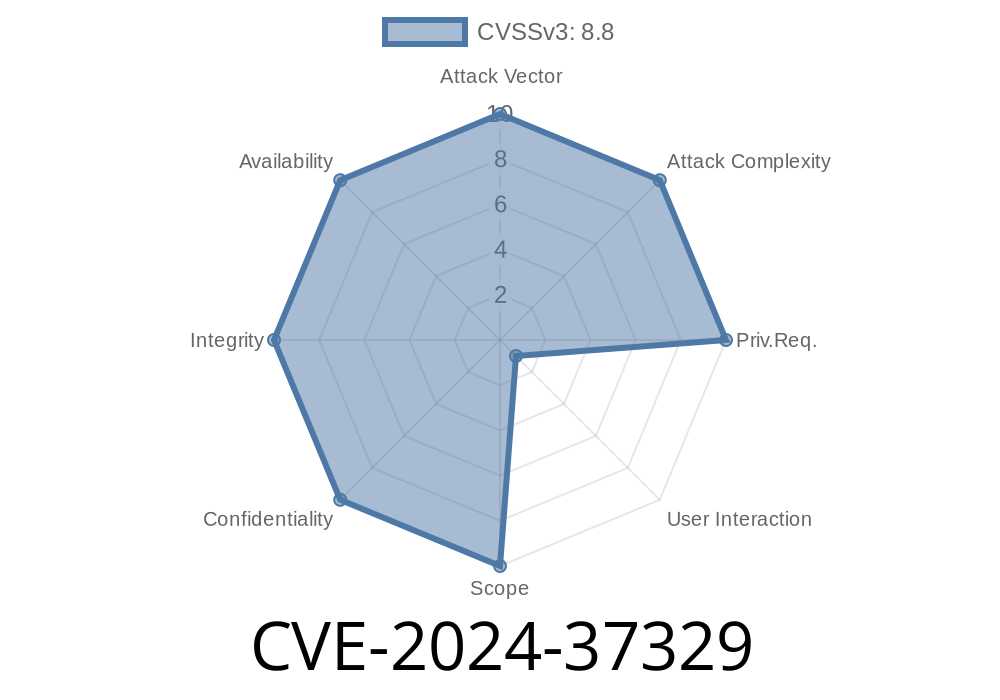---
In June 2024, Microsoft disclosed a critical security issue called CVE-2024-37329. This vulnerability targets the Microsoft SQL Server Native Client’s OLE DB provider and can allow a remote attacker to run any code they want on a victim’s Windows machine—potentially letting them take over the system.
In this post, I’ll break down what happened, how an attacker might exploit it, provide code snippets to understand the concept, and share helpful references if you want to dive deeper.
What is CVE-2024-37329?
CVE-2024-37329 is a Remote Code Execution (RCE) vulnerability in the SQL Server Native Client OLE DB Provider. This component helps Windows applications communicate with Microsoft SQL Server databases.
The flaw can be triggered by sending malicious data to the OLE DB provider, often via a specially crafted connection string or payload, which can then trick the provider into running attacker-chosen code. The vulnerability is particularly dangerous because it could be exploited over a network if the application connects to untrusted data sources or accepts user-supplied input to database functions.
How Serious Is This Vulnerability?
CVE-2024-37329 has been marked as critical by Microsoft, with a CVSS (Common Vulnerability Scoring System) score above 8. That means exploitation is not just possible, but likely, if you’re exposed and unpatched.
How Could An Attacker Exploit It?
Let’s imagine you have an application that uses the SQL Server Native Client OLE DB provider, and it lets users specify some part of the database connection string. An attacker could supply a malicious connection string that’s carefully crafted to trigger the vulnerability.
While Microsoft has not released the exact technical details (to prevent widespread abuse), security researchers and vendors have confirmed that malformed OLE DB connection strings or result sets can abuse the vulnerability.
A hypothetical exploitation scenario
1. Attacker sends or injects a malicious connection string to an application using the vulnerable provider.
The OLE DB provider tries to parse this string.
3. Because of the bug, the provider mishandles part of the string, overwriting memory and letting the attacker run code of their choice.
Here’s a typical OLE DB connection string in C++ using the SQL Server Native Client
#import "C:\Program Files\Common Files\System\Ole DB\sqloledb.dll"
#include <iostream>
#include <oledb.h>
int main() {
// Normal connection string (safe)
const wchar_t* goodConnStr = L"Provider=SQLNCLI11;Server=myserver;Database=mydb;Trusted_Connection=yes;";
// Malicious/payload connection string (for demonstration)
// In real world, this would be constructed to exploit the bug
const wchar_t* evilConnStr = L"Provider=SQLNCLI11;Data Source=evilserver;InitString={attack_payload};";
// Here you might initialize the OLE connection with goodConnStr or evilConnStr
// ... actual OLE DB usage (omitted for safety) ...
std::wcout << "Attempting connection with: " << evilConnStr << std::endl;
}
Note: This is just a simple illustration. Actual exploitation would use a much more complex payload, aiming to trigger the bug deep inside the OLE DB provider’s handling of the string.
Demo: Proof of Concept (PoC) - Conceptual
A full working exploit would be dangerous to publish. Here’s a minimal idea of how an attacker might start:
How To Protect Yourself
- Patch immediately: Microsoft has released a patch. Apply all June 2024 updates to Windows machines with SQL Native Client installed.
Disable the OLE DB Provider if you don’t need it.
- Follow least-privilege: Only allow apps/users to interact with the database provider if needed.
References & More Reading
- Official Microsoft Advisory: CVE-2024-37329
- NIST NVD Entry
- SQL Server Security Guidance
Summary
CVE-2024-37329 is a high-risk remote code execution vulnerability in the SQL Server Native Client OLE DB Provider. If you use applications or servers that connect to SQL Server and they haven’t been patched since June 2024, you must update ASAP. Attackers can remotely leverage this vulnerability for full takeover with little resistance.
Stay safe: keep your systems updated and lock down who can talk to your database providers!
If you have questions or want deep technical details, check the links above or your vendor's security portal.
Timeline
Published on: 07/09/2024 17:15:21 UTC
Last modified on: 09/03/2024 22:29:25 UTC
